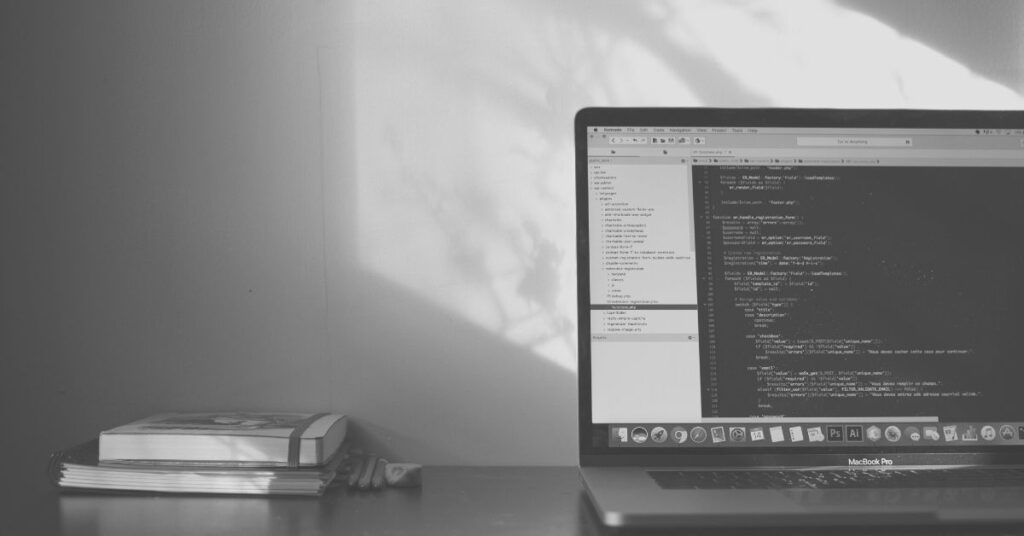The speed at which the web development space is changing is rapid. Navigating this landscape and adapting to changes plays a significant role in the work of web developers, as well as the companies they work for. The ability to recognise trends and react accordingly has never been more critical.
Web developers are the brains behind your website and apps – bringing to life your brand and creating the best user experience for your consumers. Let’s look at some popular web trends so far this year.
The modern-day web
As the internet continues to grow exponentially and be a central point in commanding business and growth, the focus of the user and their needs have never been more paramount. Over the last few years, user experiences that were once considered unique and optional have shifted to becoming baseline expectations for users as they interact with the modern web and applications.
Some great examples of this are light/dark mode websites, which give the user the ability to view a webpage in the colour scheme that suits them. This elevates accessibility and contrast and decreases eye strain for people using computers for prolonged periods.
Another great example (although this has been gaining traction for a long time!) is the‘ mobile first’ design. This is the concept of designing websites and applications for mobile devices first and scaling them up for desktops throughout the development process. Mobile devices account for just over 50% of all web traffic and 75% of e-commerce sales. Neglecting the mobile user is a modern-day death sentence for most businesses, depending on how they use the web.

Image source: Breeder Dao
Why companies are prioritising design
Creating robust and exciting designs to stand out from the crowd has become a go-to marketing tool for businesses of all scales. When the internet was first adopted en masse, companies spent considerably smaller amounts of their budget on the User Interface as it didn’t deliver a good return on investment. As the competition has grown and expectations have risen, we have started to see a shift in mindset. Companies use their website designs as the first point of contact with potential customers to convey their message and ideals visually while building a strong brand identity.
As the need for complex designs has grown, applications like Figma have come to the forefront of the market. Figma is free, open-source cloud software that allows designers to make quick and detailed iterations of web designs.
These designs can be 1:1 recreation of the product or simple, quick mock-ups. Throughout this process, the client can access the file and attach comments to make the process highly collaborative. Once completed, they can be handed to clients for approval (they can comment too!) and then onto developers to recreate the designs. This process has streamlined the process of designing complex web apps, letting developers focus on code.
Which direction is web design headed?
Much like fashion, what is considered good-looking is constantly changing and is subjective to each user. Aside from looking good, one of the most notable changes with user interfaces and applications is the level of interactivity that is now possible. No longer are you forced into having a two-dimensional website with some basic loading animations and button hover animations.
It is now possible to create full 3D websites that are entirely interactive and give the user complete control of interacting and communicating with the interface. While this approach is not required or necessary for many websites and applications, it has opened a new world of possibilities and methods to modern web design.
Although this design approach is predominantly being utilised by technology and digital companies now, this shift of focussing on high levels of interactivity and advanced user experiences is here to stay.
Here are a few sites that do it well:
- Black motion – A Visual FX Agency
- Breeder Dao – A blockchain company
- Poseidon energy drink – An energy drink company
Development frameworks – what and why
Development frameworks have made building complex sites and applications considerably easier and more manageable in teams, giving developers access to a significantly greater number of features. These development frameworks have also been a huge reason the interactivity and emphasis on rich users’ experiences have become a possibility.
JavaScript has been the leader in this space, with frameworks like react, angular, vue and svelte being some of the most popular among new developers. With their rich APIs and easy learning curve (relatively), developers and large companies are favouring these technologies.
These frameworks also allow for simple integration with complex databases enabling developers to create data-driven applications that don’t sacrifice the user experience.
The number of frameworks and possibilities is endless and picking the right one for your project is very important. However, all offer a wide range of features that will deliver a rich user experience, whether it be an admin dashboard to track sales, an eCommerce site to drive sales, a landing page to build your brand or anything in between.


Image Source: Black Motion and Poseidon Energy Drinks
To sum it all up
The continued emphasis and focus on the user, and their experiences are the driving force in how we as consumers interact with websites and apps and as developers build apps and websites.
Experiences are so much more than just that in the modern-day world. They are tools to help build and solidify brand identity whilst showcasing your brand’s creativity and expertise.
Leveraging the potential of the internet to stand out from the crowd and make yourself a memorable brand is more important than ever. Your options are limitless as the trends in development have been heavily focused on providing the user with a personalised, custom, interactive user experience.
If you’re looking to stand out from the crowd with a memorable website, get in touch with the Oraco team via email or Instagram DM.

